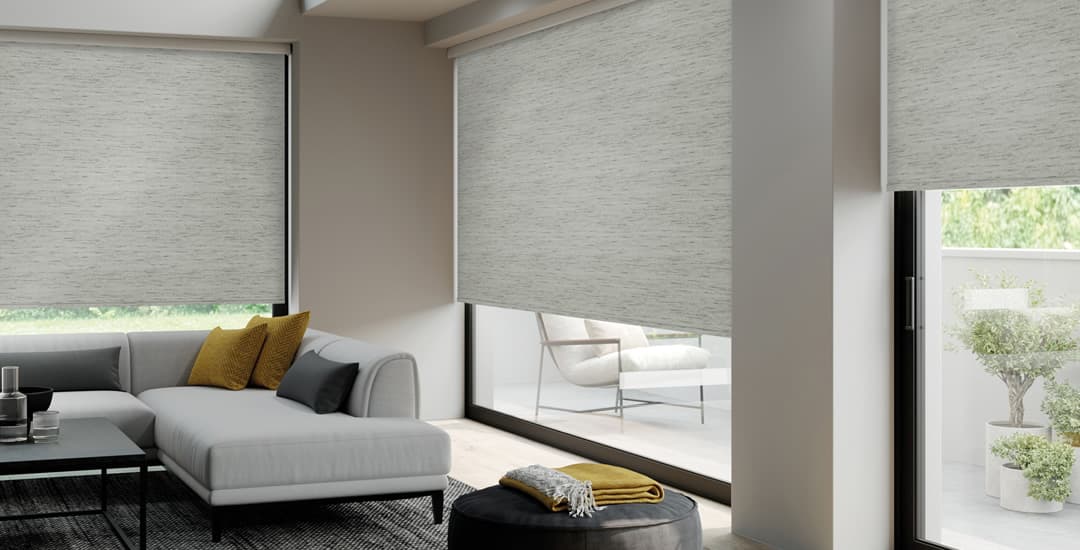
“What are roller blinds made of” is a question that we’re getting asked with an increasing level of regularity as today’s shoppers become ever-more environmentally conscious and concerned with making ethical and ecologically sound choices when it comes to their purchases.
So then, what are roller blinds made of? There are a number of components involved in rollers, and various different options for the materials used for some of them. When it comes to the main element of a roller blind – the fabric itself – this is almost universally either polyester, PVC, or vinyl respectively.
You’ve also then got the top tube and bottom bar, controls, fixing brackets and so on too, and what each of these things are made of (and their quality) can vary depending on who you buy them from, and whether they’re made up to a standard, or down to a price!
In this blog post I’ll tell you everything you ever wanted to know about the materials used to make roller blinds, and why.
What are roller blinds made of?
Roller blind fabrics can be made of various things, but 99% of them are constructed of either PVC, vinyl, or polyester. Whether you’re shopping online or in a real-world store, the fabric used for any blind you’re considering buying will almost certainly be indicated clearly within the spec, as the material used has implications for where the blind can be hung, what happens to it if it gets wet, and how long it might last too.
What is the best material for a roller blind?
If you’re looking at these three main fabric choices, what is the best material for a roller blind? This wholly depends on the environment you’re planning to use the blind in.
For kitchens, bathrooms, any other rooms where humidity and/or water are likely to come into play, and potentially, children’s playrooms or other rooms where mess may be a factor, you will want to choose a waterproof roller blind fabric.
This means picking a PVC or vinyl fabric roller blind, both of which are waterproof, and come in a huge array of colours, patterns, and even textures. Which option you choose is up to you, and will probably be dictated by what colour or pattern you like the look of, as neither PVC nor vinyl is superior or inferior comparatively to the other.
You would not, however, in many situations want to use a polyester roller blind in a bathroom, kitchen, or other humid/wet environment, as this isn’t a waterproof fabric.
Taking that issue out of the equation, polyester roller blinds are perfectly well suited to any room of the home, and polyester is perhaps the most diverse roller blind option in terms of colour and pattern choices, and they can be made in blackout and thermally insulating options too.
What are roller blind tubes made of?
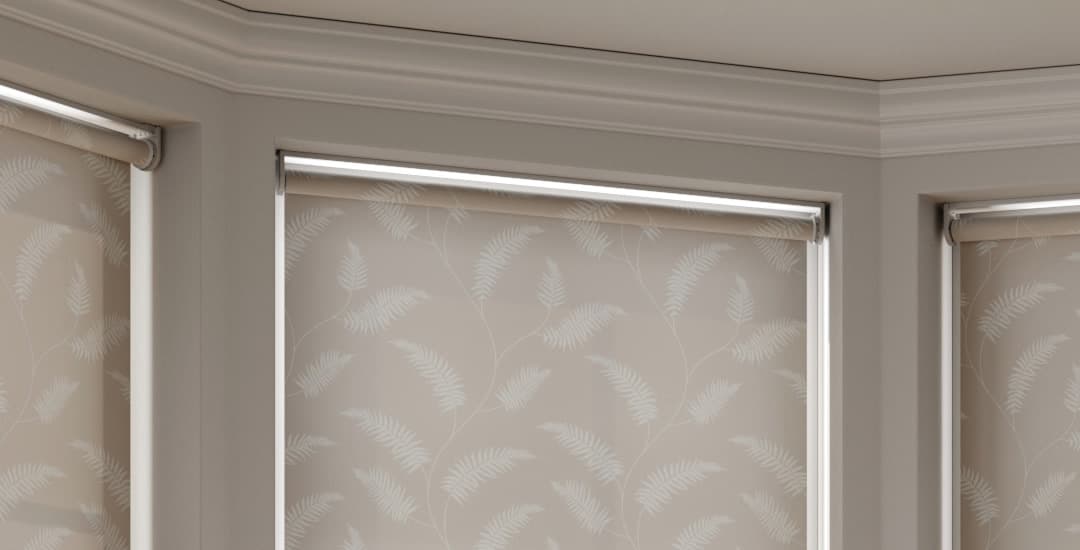
Once you get away from the fabrics themselves, the different components of roller blinds can be made of different things depending on who you buy them from. For our own roller blinds, we use high quality premium components that are designed to last, so from here on in I’ll be telling you what we here at English Blinds use to make our own roller blinds; but bear in mind that others might use other materials.
So, what are roller blinds made of when it comes to the tube the fabric rolls around? 100% tempered aluminium, which is lightweight, waterproof, rust-proof, and very strong.
We use this material for its superior torsional strength and tube deflection.
Torsional strength, this means that the blind’s tube has a high ability to withstand twisting under pressure/load), and maximum resistance to tube deflection.
“Tube deflection” refers to the ability of the blind’s tube to resist bending or bowing in the middle due to the weight of the blind’s fabric; which may be an issue on wider blinds. For this reason, we switch up to a denser tube with a slightly larger diameter on roller blinds wider than 230cm, to ensure that they are sturdy enough to hold up!
Bowing in the middle is obviously undesirable, for a range of reasons; the blind will start to bounce when you operate it, which in turn can cause the fabric to go askew and roll off to one side, resulting in a potential fabric jam and fraying around the edges.
Over time, the worst-case scenario that a progressively bowing roller blind tube could result in is that the blind pops out of its brackets altogether, which would almost certainly happen while the blind was being operated and so could result in the unlucky person involved in this getting a reasonable clonk on the head!
What are roller blind controls made of?
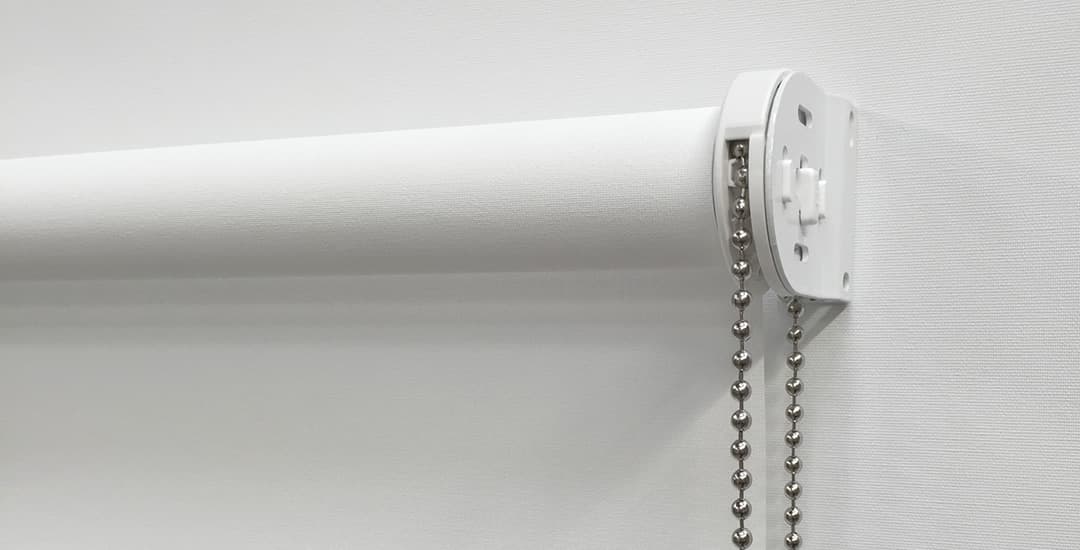
There are two elements to the controls or operational components of roller blinds, and these are the actual mechanism itself, and the chain or hanging part you tug on to move it.
The controls of modern roller blinds are known as sidewinder controls, because you wind them from the side, and mechanical engineering graduates are very literal folk…
These controls can be made of a few things, including aluminium, mild steel, acetates, and glass-filled nylon plastics, depending on what’s appropriate for the application of the blind in question and how concerned with quality its maker is.
All of our sidewinder control materials are chosen to ensure a minimum lifecycle of 10 years under normal operating conditions in their intended environment, and can realistically be expected to last for far longer than that.
The control chain part of roller blinds can be made of either white plastic acetate ball chains, or zinc or nickel-plated metals, which are designed to mimic the appearance of chrome but to last for longer and be more resistant to wear than actual chrome.
The pitch of a control chains is designed for smooth and quiet operation; and they are all designed and manufactured with child safety in mind first and foremost when fitted in accordance with the instructions.
What are roller blind bottom bars or weights made of?
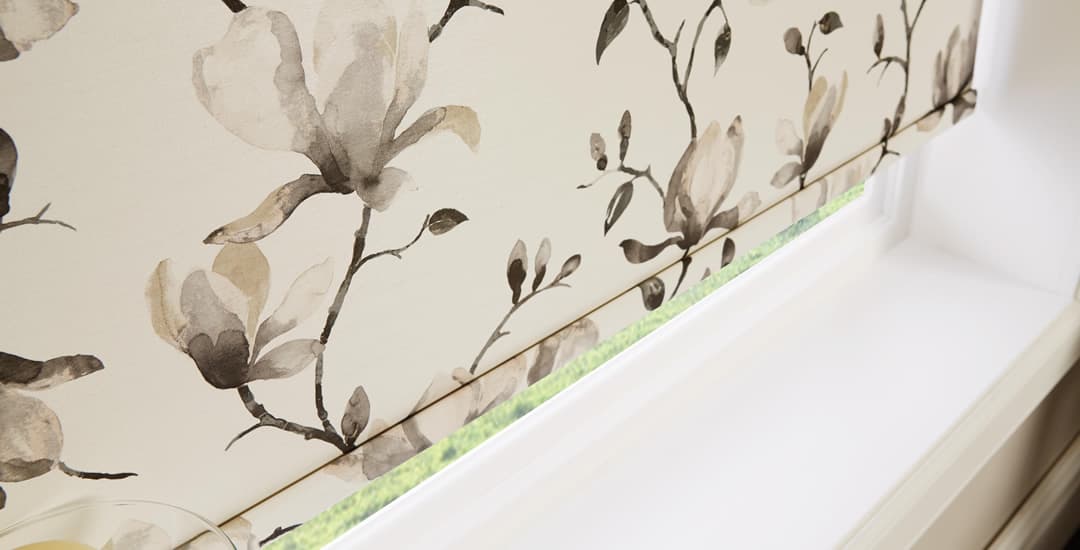
We make our roller blind weighs out of strong, durable, white PVC, which is both waterproof and rustproof. An alternative material that is sometimes used is aluminium, but we find PVC to be a better and more durable choice for many reasons, which is why this is the material we use for all of our own roller blinds.
What are roller blind fixing brackets made from?
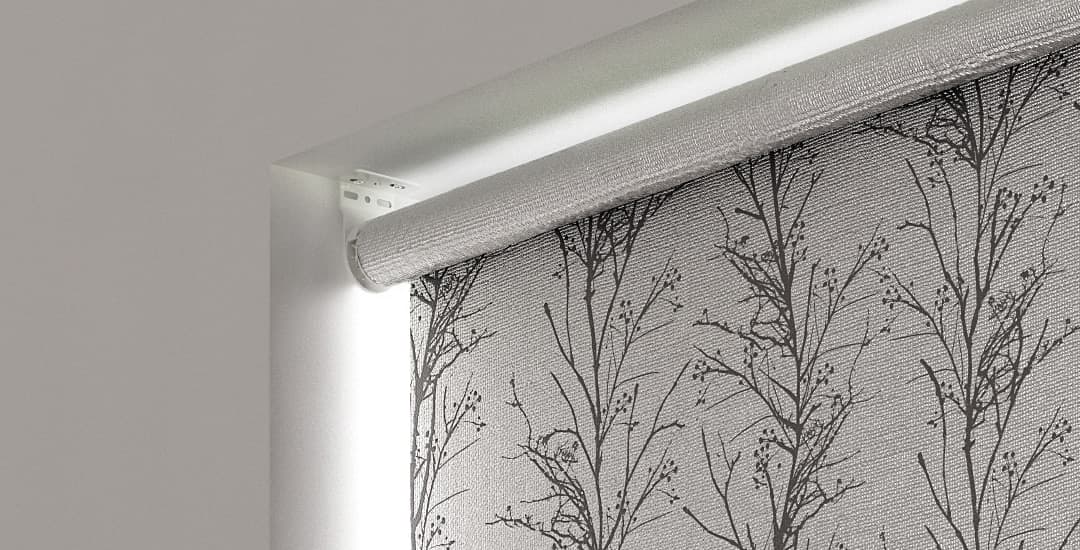
Roller blind fixing brackets need to be really strong and resist bending from the weight of the blind and the tensile stress applied when operating the blind over time. Ours are made of extremely strong galvanised steel coated in a white, waterproof stove-enamel finish, which is itself very resilient to chipping and cracking.
Roller blind brackets are a type of universal fit brackets, which means that the same bracket is suitable to use for top, face, or side fixing of the blind, whilst also being low profile in design to minimise the gap between blind and window and so, to reduce the likelihood of light leakage around the sides of the blind as far as possible.
All roller blinds are not created equal…
How long a roller blind lasts for in good functional and cosmetic condition relies on a combination of the quality of the components/materials used, their suitability for use in the environment they’re placed in, and the skills and craftsmanship involved in their fabrication.
This means that the quality of any two roller blinds bought from different retailers can vary considerably.
Bottom-end readymade roller blinds will almost invariably begin to fail and look shoddy well before they’ve reached the two-year mark, while premium quality made-to-measure roller blinds might still be rolling along their merry way in twenty years, and will definitely be doing so by the time they reach their tenth birthday!
Readymade roller blinds are designed to be cut to size, and so by design, have poor structural integrity. They may even have cardboard rollers and bottom weights, and flimsy headrails that begin to bow under the weight of the blind in short order.
However, while good quality made-to-measure roller blinds do invariably cost a shade more than readymade rollers, this is never anywhere near the five to ten times more that they can reasonably be expected to last… Making made-to-measure roller blinds the cheaper option overall in the medium to long term!




